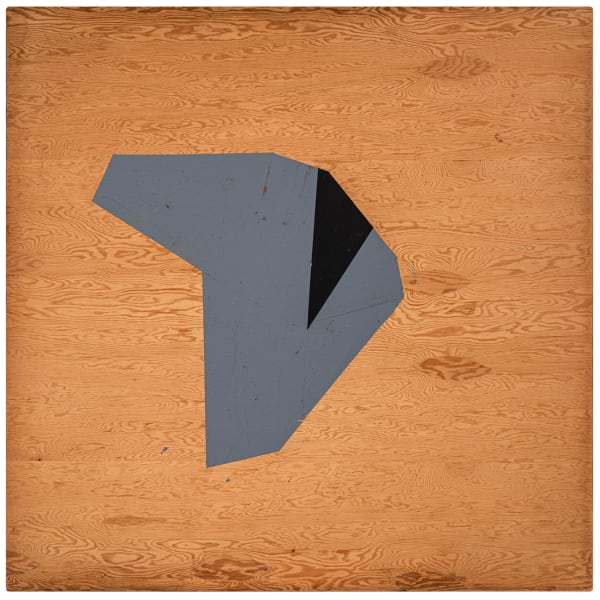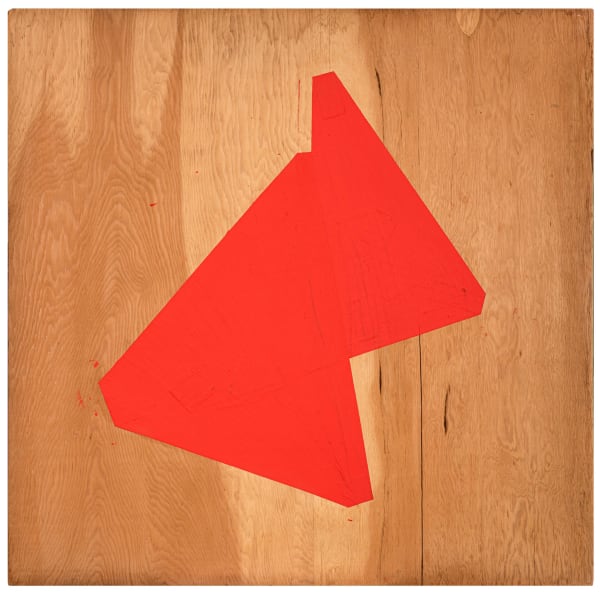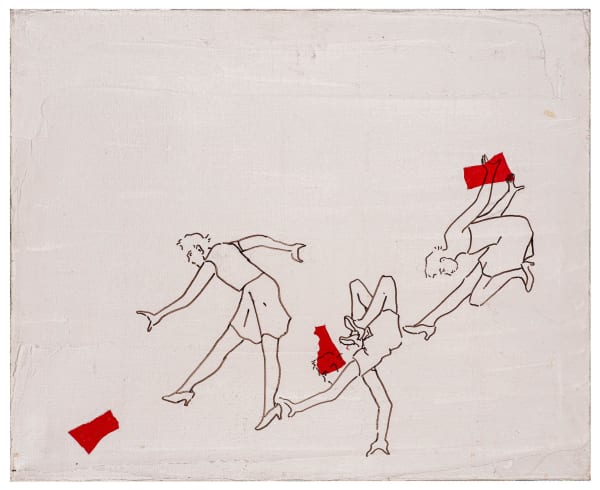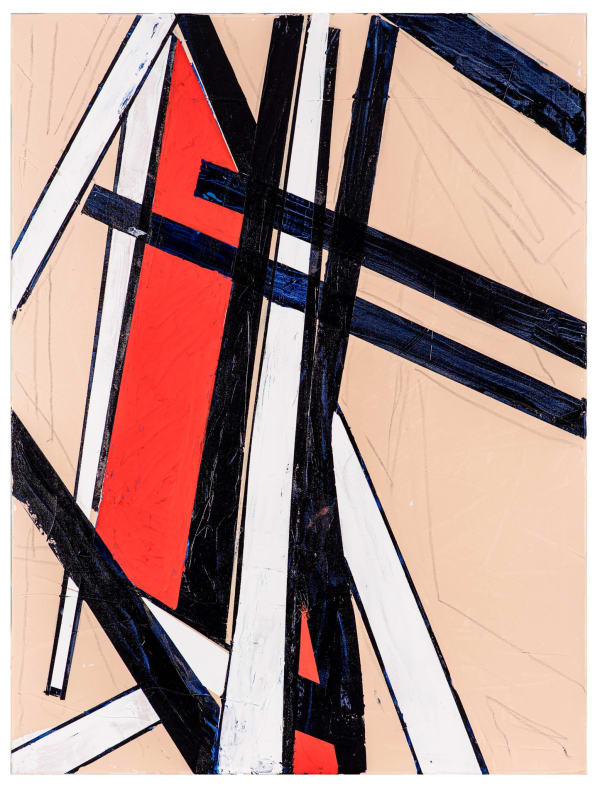-
Judy Rifka - a glance through the rearview mirror
an assessment of her formidable art: 1974 - present -
biography
More about Judy RifkaJudy Rifka was born in 1945 in New York City and studied in 1966 at the New York Studio School and in 1967 at Skowhegen School of Painting and Sculpture, Skowhegan, Maine. She lives and works in New York City.
Important exhibitions have featured Rifkas work including: Biennial of Contemporary American Art; Whitney Museum of American Art, New York; Brooke Alexander Gallery; documenta 7, Kassel; San Francisco Museum of Modern Art; Carnegie Mellon University, Pennsylvania; Institut of Contemporary Art, Philadelphia; The New Museum of Contemporary Art, New York; The Brookliyn Museum; The Aldrich Museum of Contemporary Art Museum, Ridgefield; Museum Moderner Kunst Stiftung Ludwig Wien, Vienna; Laforet Museum, Tokyo; The Kansas City Art Institute; Kunst Rai in Amsterdam; Bass Museum of Art in Miami; Museum of Fine Art in Boston; Rhode Island School of Design in Providence; The Chocolate Factory in New York; Art6 Gallery in Richmond, Virginia; Trestle Projects, BAS in Brooklyn, New York; The Amstel Gallery at The Yard in New York; Jean-Paul Najar Foundation in Dubai; Merage Gallery, at Sinai Temple in Los Angeles, USA; Walter Wickiser Gallery in New York and New York Studio School, New York, USA.
-
Judy Rifka's style and technique
More about Judy Rifka's artA well known fact about Judy Rifka's art ist that, from the beginning, her works held a strong "outside-the-main-stream" feature. The fact that the first shows weren't exhibited in classical spaces like galleries, but in downtown New York: in nightclubs, in Times Square or Franklin Furnace, may point to her alternative creation-style. Rifka's productions on mediums like plywood or rugmaker's mesh are extraordinary. Also mentioned should be her unconventional paint materials with whom she often paints: modeling paste, ink and dense-plastery acrylic. A part of Rifka's art works are adjoining to the plastic and architectural because of their restless efforts to break the second dimension and their accurate sharp and edged forms. Rifka avails herself of the multitude of art techniques, combines different materials and creates perfectly executed and harmonic compositions in an extremely precise technique.
*cf. Susan Sollins, Judy Rifka, in: Points of View: four Painters, New York 1985.
-
Judy Rifka on The single shape series
"So after the Studio School, I traveled through the Southwest and lived on a Navajo reservation where I painted. Desert space became a big thing for me, because there I was, trying to understand space in this vast area. Later on I became involved in dance and mixed the idea of movement with space, considering a line as a trajectory of movement. So it became about understanding space on the two-dimensional plane. That’s where the plywood paintings really started happening. Those works show movement of lines that build up into shape, and morphing fields. It’s a real different look at space. I’m not really going in the direction of other painters in terms of focusing on the surface and the strokes. I’m really rushing past that to what’s going on in the space and how it’s developing with time. That’s why I’ll often have a shape on the canvas that fairly ignores the exterior. That’s why I liked the plywood; it was like a floor for the shapes to dance on. My compositions often move forward more and laterally incidentally, whereas typical compositions think about the way a viewer is going to relate to the exterior rectangle. I’m just leaving it there as a floor and moving forward."
* Judy Rifka, 2016, in: Fjordsreview.
-
Single shape Series from the 70's
-
"Her single shapes on plywood are among the most important paintings of the decade. Every painter who saw them at the time recognized their influence. She could then be called a painter’s painter if feeding ideas to others is what painters’ painters do. I suspect that it would be a heartbreaking thing to watch others get credit for your invention. Her researches into Constructivist theory were groundbreaking, but a pioneer is never at a loss for uncharted territory."
*Rene Ricard, The Radiant Child, in: Artforum International, December 1981, Vol. 20, No. 4, New York City, 41.
"Rifka’s initial spatial explorations took place in the late ‘70s when she began creating her celebrated single shapes on plywood. [...] These works show movement of lines building up into shape and morphing fields. Rifka used plywood because she felt it was like a floor for her shapes to dance on. As opposed to creating compositions focused on how the viewer would relate to the exterior rectangle, Rifka allowed her compositions to move forward, often creating shapes that ignore the exterior and forcefully emanate off the picture plane. The single shapes on plywood were first shown at Artists Space and the Whitney Museum."
* Shira Wolfe, Lost (and Found) Artist Series: Judy Rifka, in: Artland Magazine, Nr. 56, 2021.
-
series from 1979
-
Series from 1980
-
"Judy Rifka is a boss—a painter with effortless art-cool whose conceptual study of space, shape and time has been featured in two Whitney Biennials (1975 and 1983) and more than fifty solo shows. Her four decades in the industry landed her in the middle of some of the most important and romanticized art movements in America, from the multi-disciplinary performance events of Fluxus and the artist-driven activism of Colab to New York City’s Lower East Side art scene, where she showed early works at The Mudd Club, rubbing shoulders with the likes of Keith Haring.[...] Rifka’s work—complex in its simplicity, varied in its form and medium—is the result of a life spent learning, experimenting and exploring the depths of her mind and creativity, much like she does with space on the canvas.[...]"
*Glynn Pogue, 2016, in: Fjordsreview.
-
Works from 1981
-
series from 1982
-
the pyramid series from 1983
-
"[...] Artists and critics alike praised Rifka’s work. In April, 1974, art critic Jeremy Gilbert-Rolfe wrote in Artforum that Judy Rifka’s Single Shapes “dominated the show” [...] and “that Rifka’s is the most devastatingly original formulation of painting’s identity that I’ve encountered in some time.” In 1975, The Whitney Museum’s curators selected her Single Shapes for that year’s Biennial and the American conceptual artist, Mel Bochner, selected Rifka’s Single Shapes for a 1975 show at Artists Space, NYC. [...] In 1983, the German magazine Kunstforum explored the contemporary art scene in New York only to conclude that Judy Rifka is the quintessential New York artist and the “outspoken representative of the post-minimal era.”
Back when the art world was smaller, before art fairs and the internet, Judy Rifka, it seemed, was everywhere. She participated in the first show at the Mudd Club (curated by her close friend, Keith Haring) and at PS1’s inaugural exhibition in Long Island City, Queens; had an entire floor space at the 1983 Whitney Biennial for her large Wallpaper paintings, rocked Documenta 7 in Kassel thanks to the German curator extraordinaire, Klaus Honnef; was included in the infamous Times Square Show, collaborated with the art collective Colab, created multiple design covers for the legendary Art-Rite magazine, had her art on the cover of Art In America, and is in 26 museums and institutions around the world. And from the late 70’s to early 90’s sold hundreds of works through her main dealer, Brooke Alexander, in New York City. [...]"
*Gregory de la Haba, 2021.
-
series from 1984
-
History of Sculpture
-
series from 1990
-
"There has been a lot of talk about space in painting, and the art world tends to keep it formal. At times people get really into the postmodern dialogue, and then they don’t really give a damn about space. It becomes some vast conceptual idea. When I think about space, I have to think about how all paintings deal with space and try to find a way out of that. Malevich is very interesting because he really conceptualized modern painting in probably 1913, and he was talking about finding hyperspace, some other kind of connection. Hofmann later talked about it in terms of color and the ideas of push, pull and relational space. So now, when I’m painting, it’s the idea of making a mark and deciding where and how to make the other mark, and that goes back to dance and movement. It’s a decision to go somewhere. I’m here, and I’m going to go there. It becomes an emotional connection between an idea and putting your body where your mind is. So it’s all about the way things relate in that space, and I think about the way to make the actual form continue through that, kind of, wish space. So I take the paint, go from one point to another, and then it becomes a body. It’s the way a body creates itself or a pseudopod moves. So I create a form based on the space, that’s why there’s no space within that shape, because the space has turned to paint. Then I take these movements, which are generally two, sometimes three, and I have knotted them back and forth to create built-up space. Some people try to do that from the outside in, but that’s impossible, because you don’t know what the shape is going to look like. It’s like a convex hull in math. It’s a shape that’s created by a perimeter of shapes. I’m creating convex hulls that bloom back and forth over each other so that the space is eliminated. When I made those pieces, not many people understood them. But those ideas were important to me at the time. They still are."
*Judy Rifka, 2016, in: Fjordsreview.
-
Series from 2020
-
"There is no actual space in painting: that space always becomes an emotional Paradigm-shifting. That is what it is about for me. You don’t just sit there and follow in everyone’s footsteps. You have to paint your way through it, and that takes time. I ask, what does everyone think that painting is about, that it doesn’t have to be about? What conclusions are they drawing that we are ready to break out of? In painting, you put one thing down, then you think about where you want to put another thing. After that, it looks like some kind of space is built up. However, there is no actual space in painting: that space always becomes an emotional connection. Making a painted connection of your intention is the same as growth, the same as how any form works, how a pseudopod works, how evolution works. You decide where you want to go, you go there, and then you build a body to go there. This becomes the form. So the space disappears, and a form, or a body, comes out of it."
*Judy Rifka, 2021.
Judy Rifka - a glance through the rearview mirror.: an assessment of her formidable art: 1974 - present
Past viewing_room





























